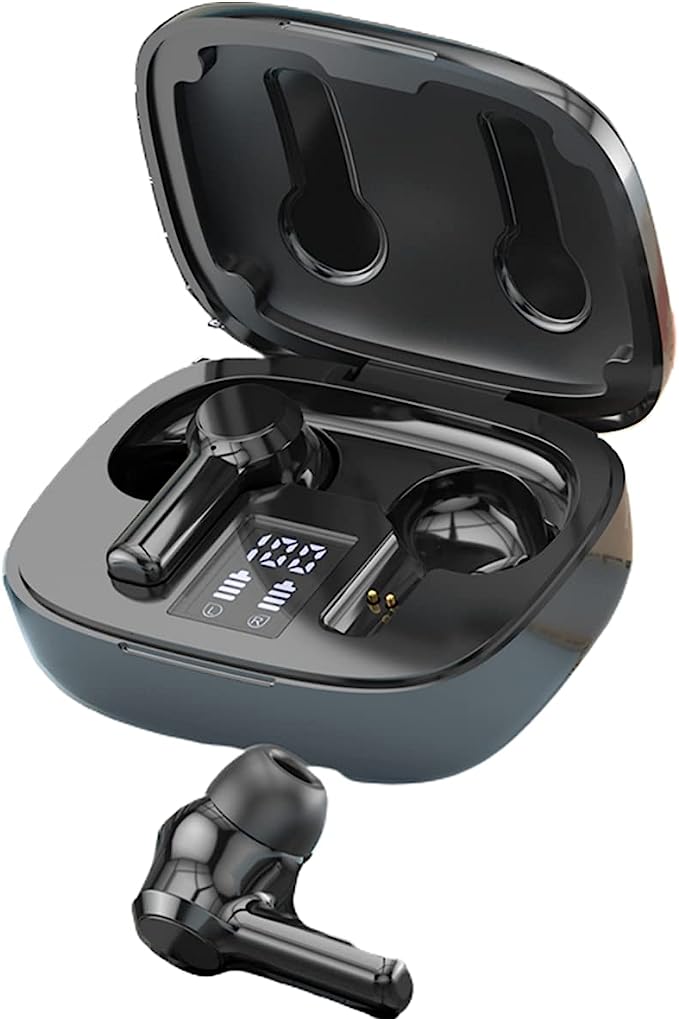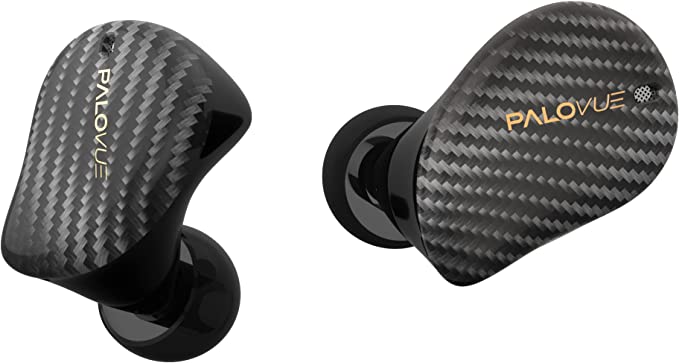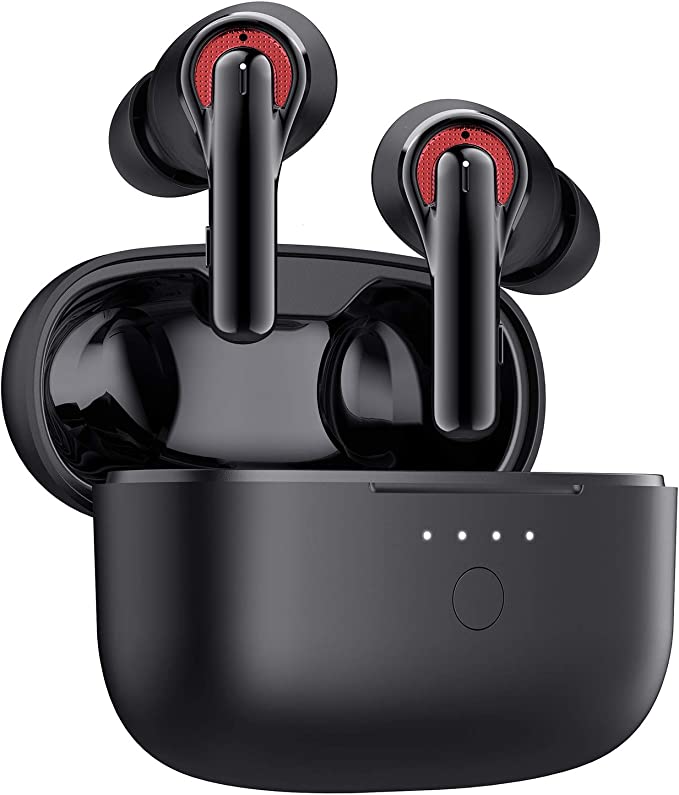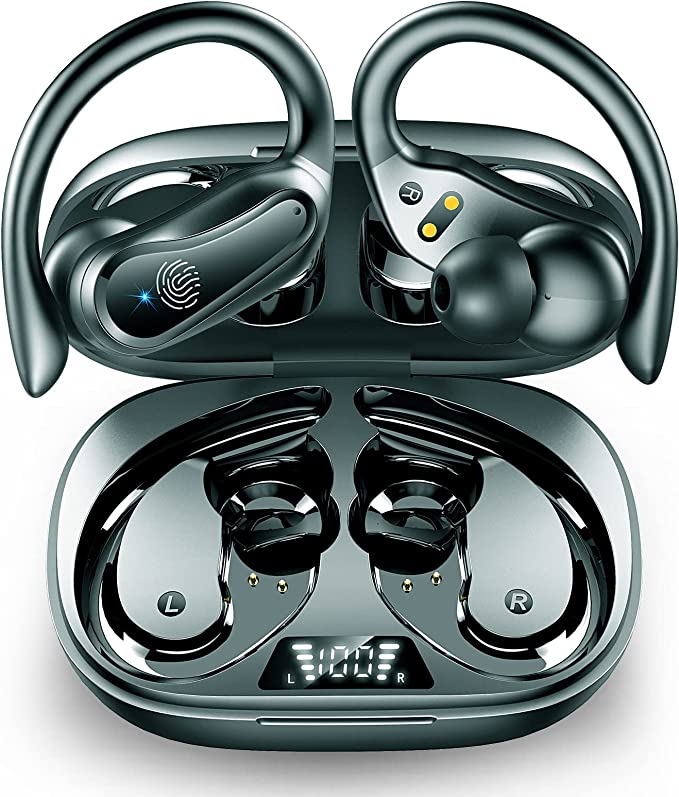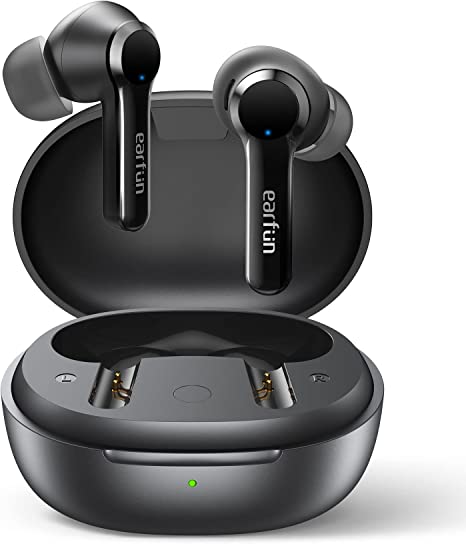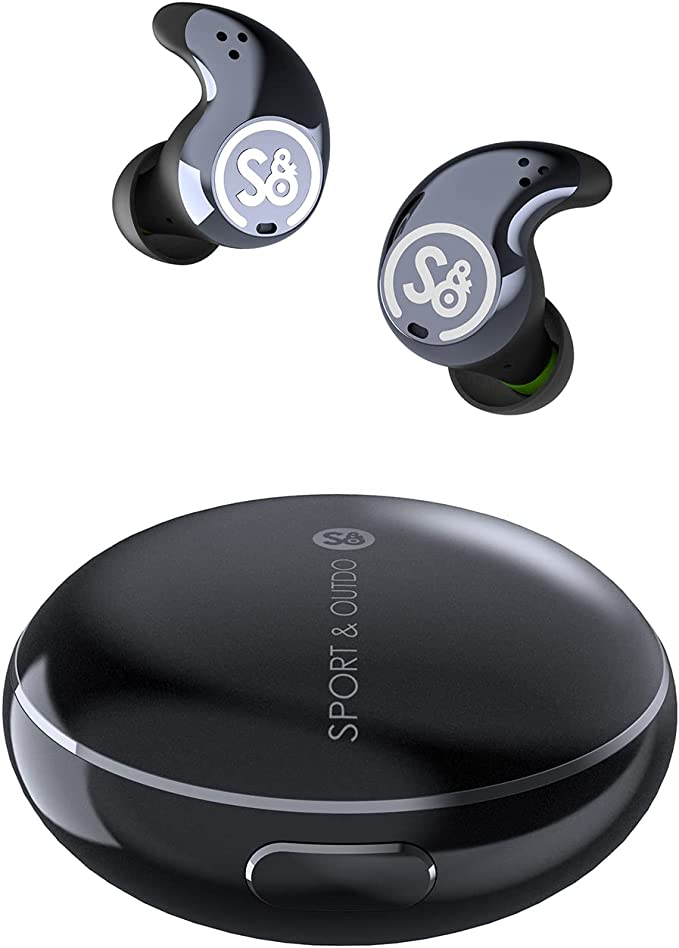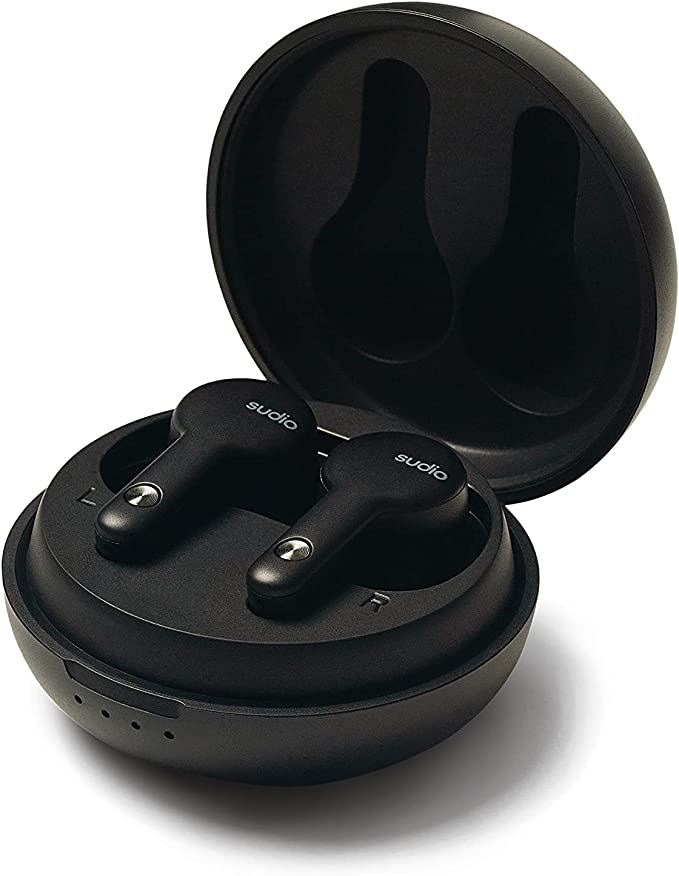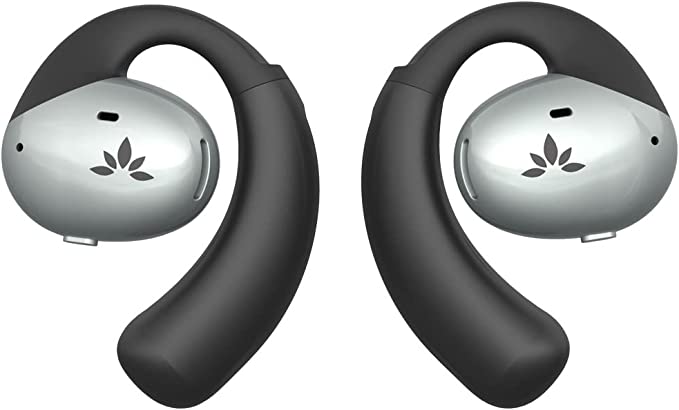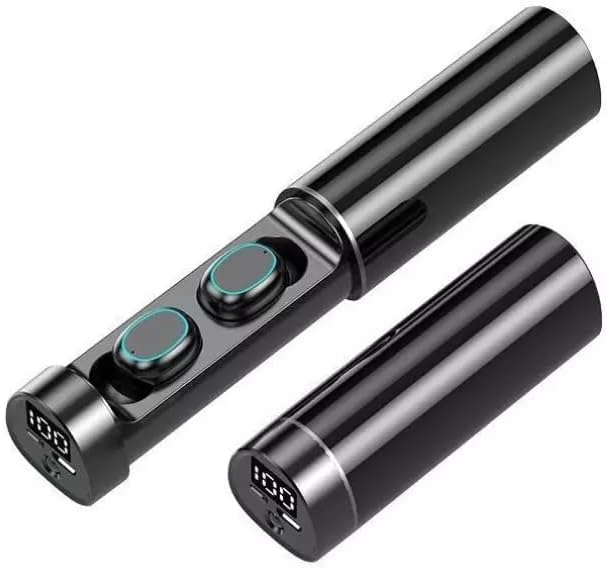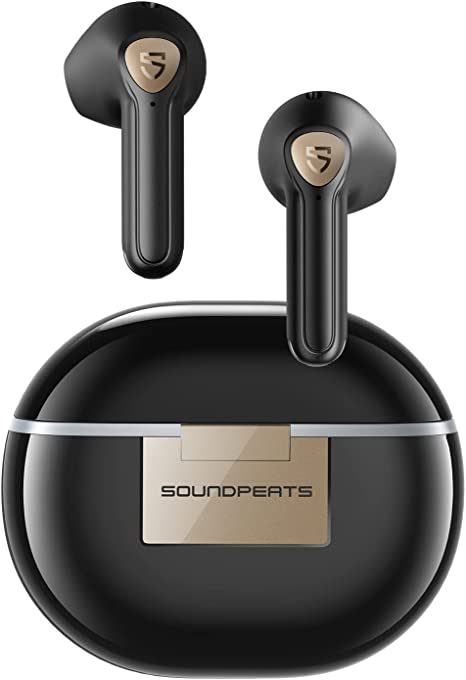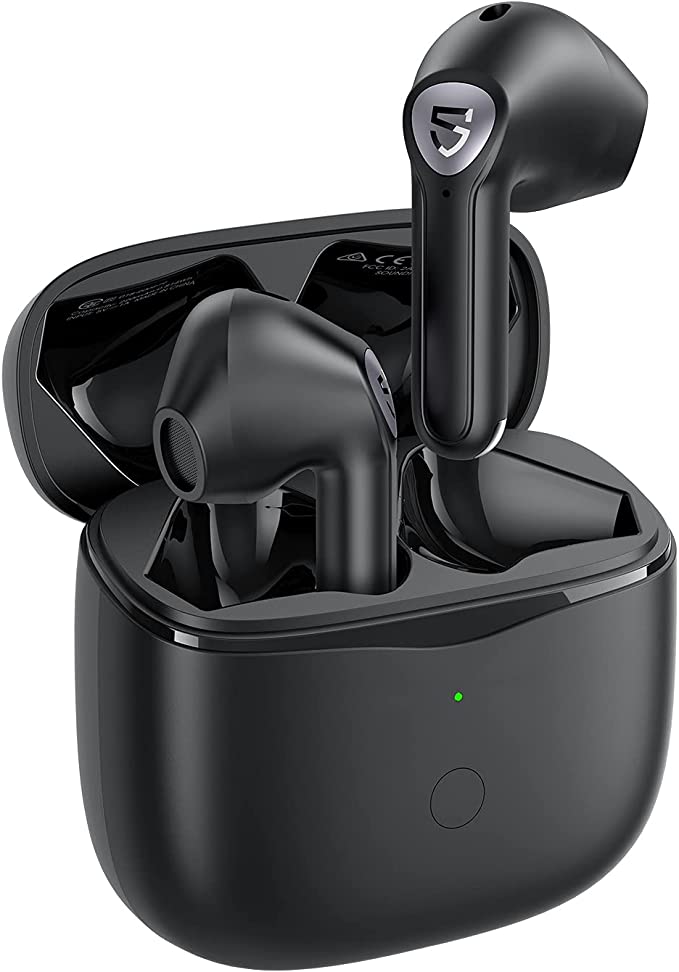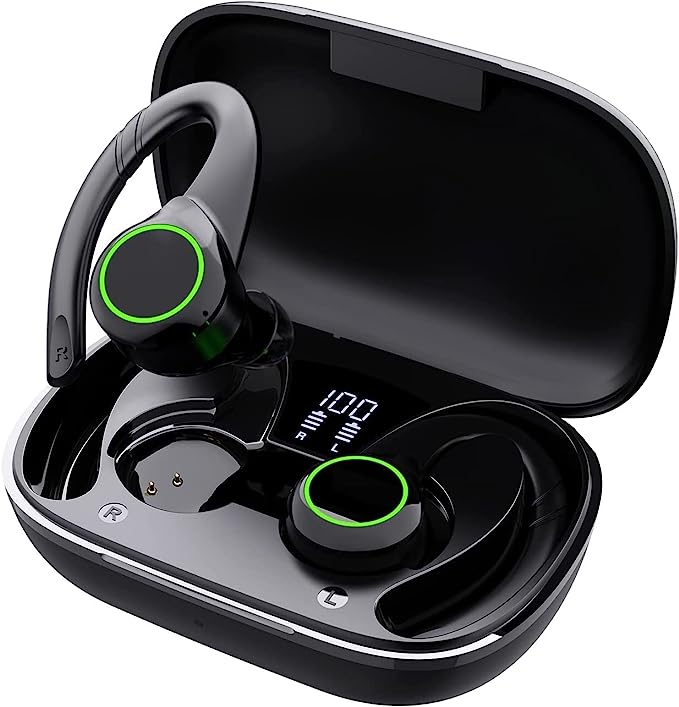PALOVUE SportSound Wireless Earbuds - Perfect for Sport and Workout
Update on July 24, 2025, 6:47 p.m.
There’s a sacred rhythm to a good workout. It’s in the steady cadence of your breath, the percussive strike of your feet on the pavement, the focused pull of muscle against resistance. In these moments, music isn’t just a background distraction; it’s the fuel, the metronome, the very pulse of your effort. Then, the spell is broken. An earbud, slick with sweat, works itself loose, and suddenly, your focus shatters. The world rushes back in, and the immersive bubble you’ve built evaporates.
This gap—between frustrating distraction and the sublime state of athletic “flow”—is where thoughtful engineering becomes an art form. It reveals that the best sports headphones aren’t defined by what they do, but by what they allow you to forget. They are instruments designed not just to play sound, but to shield your focus. Using a device like the PALOVUE SportSound as a case study, we can dissect the unseen science that transforms a simple pair of earbuds into a key that unlocks your peak psychological state.

The Art of Staying Put: The Biomechanics of Uninterrupted Motion
Why do so many earbuds fail at the most basic task of staying in your ear during vigorous movement? The answer lies in simple physics. A traditional earbud relies on a single, precarious point of friction within the ear canal. This lone point must fight a constant battle against gravity, the shock of impact from each stride, and the shifting forces of your body in motion. It’s a battle it often loses.
The introduction of an earhook is not merely an add-on; it’s a fundamental shift in design philosophy, grounded in the principles of biomechanics. Instead of relying on friction, the earhook leverages your body’s own anatomy. It uses the rigid cartilage of the outer ear (the pinna) as a stable, load-bearing anchor. Think of it like the difference between a rock climber merely leaning against a cliff face versus securing themselves with a well-placed anchor. The earhook acts as that anchor, distributing the forces of movement across a wider, more stable structure.
The psychological payoff of this design is immense. It liberates your brain from a subtle but persistent cognitive load—the subconscious worry that your equipment might fail. When you trust your earbuds to stay put, your mind is freed to focus on what truly matters: your form, your breathing, your effort. The technology has done its job by making itself unnoticeable.

Forging a Zone of Silence: The Acoustics of Inner Focus
A modern gym is a cacophony of sound—the clang of iron, the hum of treadmills, the competing soundtracks blasting from overhead speakers. For an athlete, this sensory overload is a direct assault on concentration. Creating a personal sanctuary of sound is not a luxury; it is essential for performance.
This is where we must clarify a common misconception fueled by marketing: “Noise Cancelling.” The term encompasses two very different technologies. Active Noise Cancellation (ANC) is an electronic marvel that uses microphones to create “anti-noise” waves, but it comes at the cost of battery life and complexity. The PALOVUE SportSound, however, employs a more elegant and physical solution: Passive Noise Isolation.

The science behind this is acoustic damping. The soft silicone tip is engineered to form a precise seal within the ear canal, creating a physical barrier. This barrier is incredibly effective at blocking and absorbing high-frequency sound waves—the very frequencies of human speech and clattering weights. It’s the difference between generating a counter-attack and simply building an impenetrable fortress.
By creating this “zone of silence,” the earbuds do more than just make music clearer. They facilitate the entry into a “flow state,” a concept central to performance psychology. This is the state of being fully immersed in an activity, where focus is effortless and performance peaks. By physically shielding the ear from external distractions, passive noise isolation becomes a powerful tool for achieving this coveted mental state.

Defying the Elements: The Material Science of Endurance
Any gear destined for the crucible of a workout must be built to last. The claim of “waterproof” on sports headphones points to a battle being waged on a microscopic level, governed by the laws of material science. The primary adversary is not water, but sweat. Sweat is an electrolyte solution, rich in salts that are highly corrosive to the delicate circuitry inside electronics.

An effective defense is built on the engineering principles of Ingress Protection, a concept standardized by international bodies like the IEC. This involves creating a sealed chassis with minimal entry points for moisture. But the real magic often lies in the surface itself. Many high-performance electronics are treated with hydrophobic nano-coatings. These coatings work on a molecular level to repel water, mimicking the “Lotus Effect” seen in nature, where water beads up and rolls off a leaf’s surface. This invisible shield ensures that even when you’re pushing your limits, your technology remains unharmed. It builds a fundamental trust that your gear will not fail you when you need it most.

The Invisible Lifeline: The Nervous System of Your Audio Experience
You can have the most secure fit and perfect sound isolation, but if the wireless connection is unstable, the entire experience collapses. The audio stutters, the link drops, and you’re once again pulled from your zone. The invisible backbone of any great wireless device is the stability of its connection.

The inclusion of Bluetooth 5.2 is significant. This isn’t just a version number; it’s a standard maintained by the Bluetooth Special Interest Group (SIG) that brings concrete advantages. It offers more robust data transmission, making it far less susceptible to interference from other wireless signals in a crowded gym. Furthermore, its Low Energy (LE) protocols are exceptionally efficient, maximizing playtime on a single charge. It’s the autonomic nervous system of the earbuds—a complex system that works tirelessly and reliably in the background, demanding no conscious thought. It ensures the pairing is instant and the link is as solid as a physical wire.

Conclusion: Technology as a Path to Transparency
When we examine the anatomy of a well-designed sports earbud, we see a beautiful convergence of sciences. Biomechanics provides stability. Acoustics carves out a space for focus. Material science builds resilience. And wireless technology provides a flawless, invisible link.

The ultimate achievement of all this engineering is a kind of profound transparency. The technology doesn’t add layers of complexity to your workout; it systematically removes barriers. It’s designed to disappear, to become an extension of your will rather than an object you must manage. In doing so, it allows you to connect not with a device, but with something far more essential: the rhythm of your body, the soul of the music, and the pure, unadulterated joy of motion.
